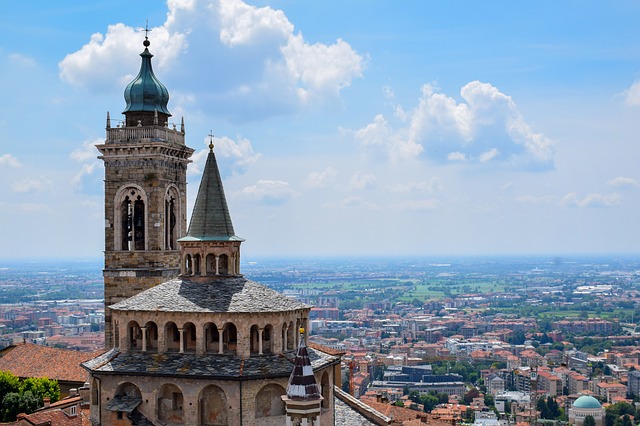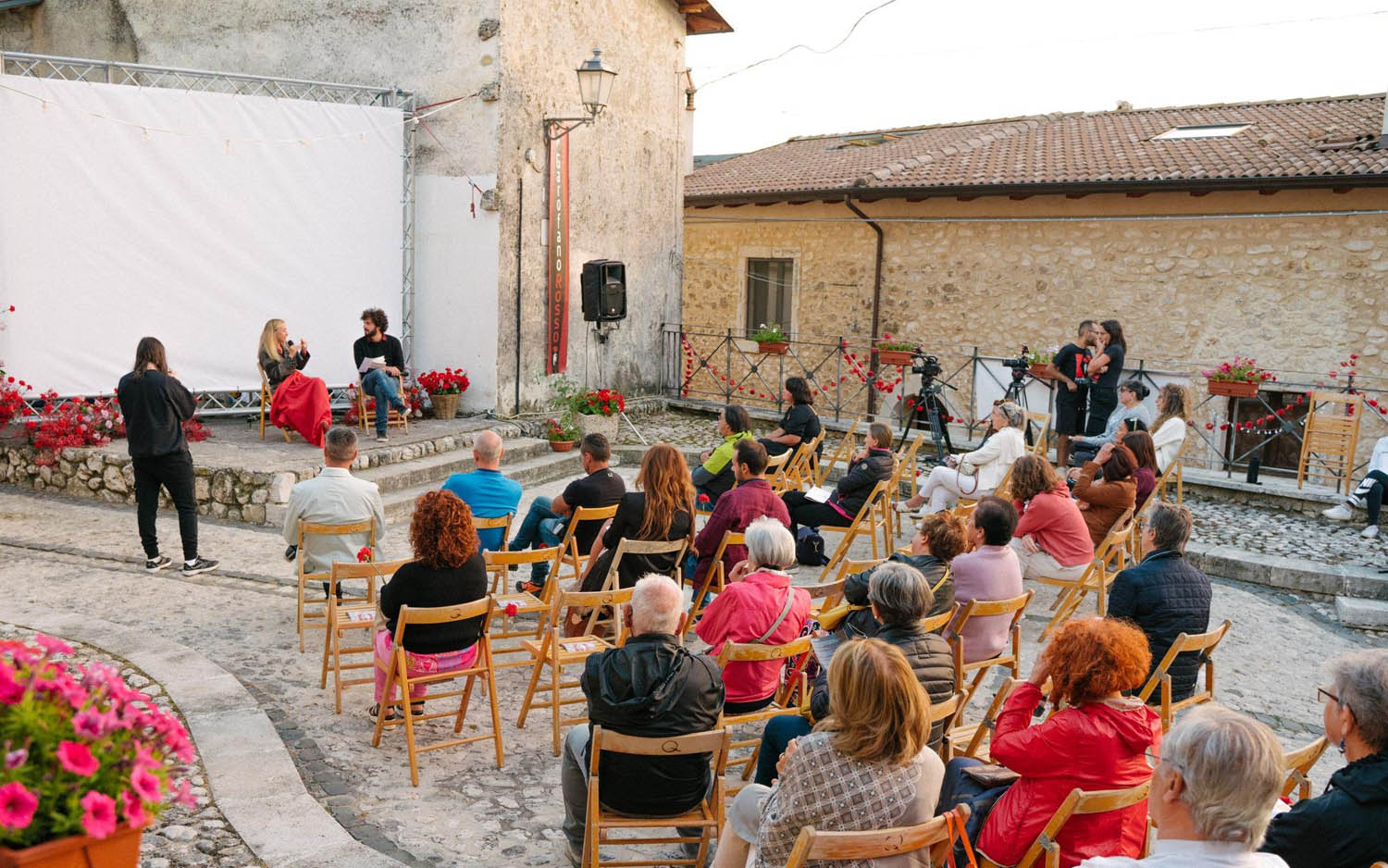
Bergamo in the Sign of Courage: Virtues, Treasures, and Magnificence of the City Symbolizing Resilience to the Pandemic.
A first hint of the tenacious character of the Bergamasque I had as a boy at the table with my cousins, true Orobian natives, convinced to the point of arguing that the correct pronunciation of the soft part of the bread was the Lombard one with the accent on the “o.” A stubbornness that I spontaneously associated, during my stays in the “two cities in one” (Upper Bergamo / Lower Bergamo), with the power of the ancient Venetian walls (a UNESCO World Heritage Site since 2017), built by the Serenissima to fortify its main bastion in the western domains of the mainland.
Every street and square of the Upper City evoked in my teenage imagination images of heroic leaders and fierce duels, of noble maidens like Medea, the favorite of the great Bergamo condottiere Bartolomeo Colleoni, a romantic icon, immortalized by the inconsolable father with the greatest of gifts, the splendid sarcophagus sculpture, the work of Antonio Amodeo, which adorns the Colleoni Chapel, an eternal monument to the transience of life but also an immense tribute to the grace and beauty of a teenager cut down by pneumonia and to the tender paternal love that wanted to place next to the mortal remains of his little daughter the embalmed body of his favorite bird, still visible today in a graceful showcase kept in the sacristy of the Chapel upon request to the caretaker.
But the mausoleum dedicated to the condottiere, one of the treasures of inestimable artistic value of the Upper City, evoked in me another possible reason for the Bergamasque stubbornness. I remember, in fact, when I asked one of my more knowledgeable cousins the meaning of the heraldic emblem of the condottiere originally from Solza. To my question, he responded with the mocking smile of someone who knows a lot, “They are Colleoni’s gingers.” “Gingers?” “Yes, sure. What you call them in Rome, ‘balè, coiò’?” he replied, a little annoyed at my surprise. “Yes, of course. But three of them?” I retorted. A light flashed in his eyes, and in an instant, I realized that having “the attributes” around here had a very specific meaning. Being tough with an extra edge.
Like the one we put into the makeshift wooden carts with which we launched ourselves at insane speeds down the hill dominated by the Castle of San Vigilio (whose first foundation dates back to the 12th century, although fortified structures were present starting from the 6th century), a spectacular observation point that with its 496 meters of altitude allows you to admire a vast portion of territory, from the mouth of the main valleys (Brembana, Seriana) to the ancient Val Breno and the entire plain of Almenno, reaching the plain and the towns at the entrance of the Val Martino, reachable today with a comfortable funicular, the second one in the Orobian town (the first, more famous, is the one that has been connecting Lower Bergamo with Upper Bergamo for over a century), at the cost of a ticket for the urban route ATB.
One day of particular calm, one of my cousins pointed out to me on the hill of San Vigilio the “roccoli,” classic bird-hunting positions, in use until the 1960s, today considered a cruel practice, but once the only hunting practice that allowed mountain dwellers and farmers to add to the plate, where polenta prevailed, the tasty meat of resident or migratory birds. The classic condiment of the local typical dish, polenta with birds (birds), abhorred by me but enjoyed with pleasure by my little cousins, who mocked my hesitations but who with great politeness and generosity loved to introduce me to the treasures and traditions of their city.
I remember entire afternoons spent in their company among the streets of the Upper City, enraptured by the beauties of the historic center. We started from Piazza Vecchia where the Palazzo della Ragione stands, dating back to the 12th century, once the Town Hall, to continue with a visit to the Church of San Michele al Pozzo Bianco, which preserves inside an authentic masterpiece, the chapel dedicated to the Blessed Virgin with frescoes by Lorenzo Lotto depicting the life of Mary. Then we passed through Piazzale della Fara, a large lawn used as a soccer field by generations of Bergamaschi, for endless matches in the shade of the Convent of Sant’Agostino.
Then we climbed up the slope leading to the Tower of Gombito (13th century), from which they enjoyed a magnificent view, managing to glimpse Milan in the distance. Then we reached one of the most characteristic places in the Upper City, Piazza Vecchia, defined by the great French architect Le Corbusier as “The most beautiful square in Europe,” a place that to my eyes appeared a miracle of harmony with its fountain, its Civic Tower (or Campanone), 52 meters high, and the splendid buildings that surround it (the first built in the fifteenth century), which give the square an almost perfect rectangular shape. Our promenade ended like in a secular procession, in front of the Cathedral of Bergamo, the magnificent Romanesque Basilica of Santa Maria Maggiore with the adjacent Mausoleum of Bartolomeo Colleoni.
But what always and in any case captivated my imagination were the mighty Venetian walls, which reminded me of the medieval ones described in the famous story by the Danish writer Peter Jacobsen “The Plague of Bergamo” (1881): “The old Bergamo rose on top of the low hill, safe behind its walls.” A defense that did not serve to save the Orobian town from the plague of 1630 (Manzoni used a contemporary description of the Bergamo epidemic for his masterpiece), but from which the tenacious people who inhabited it knew how to rise again with renewed enthusiasm, contributing to its eighteenth-century flourishing and to the economic growth of the following centuries. A miracle that has been renewed even recently with the tremendous trial to which the “City of the Thousand” (so called for the Bergamo contribution to Garibaldi’s enterprise in the South) was subjected, demonstrating a truly unique and admirable capacity to rise again from its own misfortunes. After all, as one of my cousins would say, “Pota, Osvaldo, Berghem, mola mia.”
Leggi in:
![]() Italiano
Italiano










